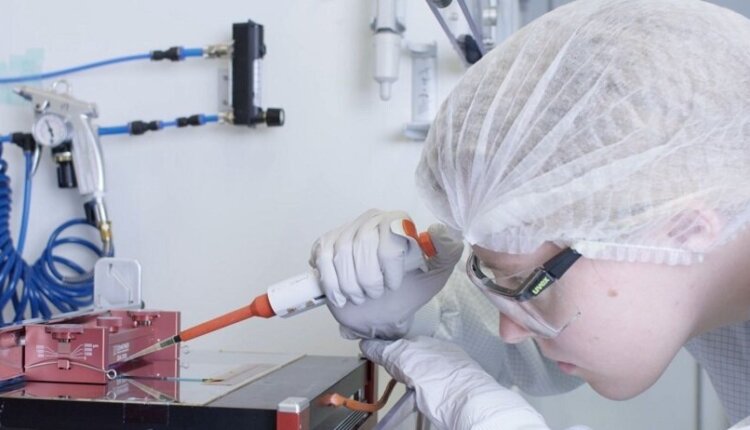Perovskite solar cells can be easily and inexpensively made from ink solutions. They recently achieved record efficiencies of up to 25.7 percent in the laboratory.
However, solvents that are harmful to health and the environment, such as dimethylformamide, are almost always used. For an industrial large-scale coating of perovskite solar cells in the photovoltaic industry, the development of processes with a less critical solvent makes sense.
The Center for Solar Energy and Hydrogen Research Baden-Württemberg (ZSW) has now achieved decisive success on this path. The researchers developed a coating process for perovskites using only the environmentally friendly solvent dimethyl sulfoxide. The efficiency of the solar cell manufactured at ZSW is practically as high as that of cells manufactured with the toxic solvent dimethylformamide.
DMSO is actually not suitable for the coating process, since the high surface tension and viscosity of the solvent leads to an uneven coating of the solar cell. In addition, the crystallization process of the cell can only be poorly controlled with DMSO, so that often only small perovskite crystals are formed. The result: The solar cell generates less photovoltaic electricity.
Adjust the production process for perovskite solar cells to the solvent
To solve this problem, the ZSW researchers used two tricks. Using an adapted film-drawing process and an improved drying method, they were able to significantly increase the efficiency of the perovskite solar cells produced with DMSO.
“We used a wetting agent made from silicon oxide nanoparticles to coat the perovskite solar cell and adapted the drying process,” says Jan-Philipp Becker, head of the ZSW Photovoltaic Materials Research department. The two optimizations result in layers with large crystallites of consistent quality.
The 0.24 square centimeter perovskite solar cells manufactured at ZSW with DMSO as a solvent achieve an efficiency of 16.7 percent. This is only 0.2 percent less than the same size perovskite solar cells with DMF that are also manufactured at the institute. The researchers use blade coating, which can be scaled up to larger production units relatively easily and is therefore suitable for industrial implementation.
This is also where the big difference to cells with record efficiency levels of 25.7 percent lies. It was manufactured using the spin coating process. Although the efficiency is higher, the method cannot be used industrially for large module areas.
“The new research results are an important milestone on the way to industrial production,” says Becker happily. “Now we will further optimize the manufacturing process and produce larger PV modules.” Using industry-standard coating methods, the researchers are working towards photovoltaic module sizes of up to 30 by 30 square centimeters. At this size, all fundamental challenges for further scaling to commercial PV module formats for thin-film PV would have already been overcome.

